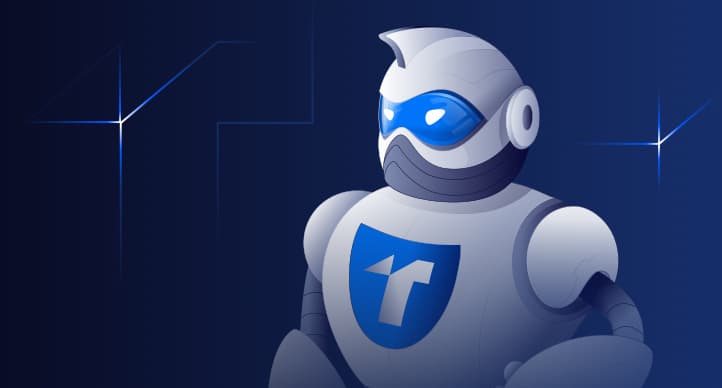Other | Apr 30, 2025 | 5 min read | By Davor Kolenc

Davor Kolenc is a growth and content marketer, specializing in API observability and monitoring. He crafts developer-focused narratives and strategic content, regularly sharing insights through blog posts on IndieHackers, Hacker News, Dev.to, and Medium. Davor also engages with the developer community via social platforms like X, LinkedIn, Hacker Noon, and Product Hunt. His work centers on delivering meaningful value to software teams through content-driven growth and practical API guidance.
On April 16th, 2024, we hosted what turned out to be our most popular webinar yet, with over 150 API practitioners, architects, and platform leaders joining us live.
Vedran Cindrić (CEO of Treblle) was joined by API expert Mike Amundsen and our own Harsha Chelle to discuss what the AI era means for API architecture and, more importantly, what to do about it.
From composable systems to machine consumers and the Model Context Protocol (MCP), this conversation was full of valuable insights. Here are five key takeaways from the session, with direct quotes from our speakers.
APIs have evolved from tools for human developers to strategic enablers for machine-driven systems. This shift is being accelerated by the rise of LLMs like GPT, which consume APIs at scale and speed, raising the bar for API structure, discoverability, and documentation.
If you haven’t yet adopted an AI-first approach to API design, now is the time to start.
“LLMs as the client of APIs has changed the game. Now I don’t have to be so explicit about inputs and outputs.”
— Mike Amundsen
“If you build an API that a machine can understand, it can integrate faster than the best engineers in the world.”
— Vedran Cindrić
“There’s a new API consumer in the market and it’s not humans, it’s machines. AI agents, LLMs, and MCP-based tools are set to become the biggest API consumers we’ve ever seen.”
— Harsha Chelle
Want to explore how machine consumers are already using APIs? Check out this list of top machine learning APIs that are powering AI today.
The days of monolithic APIs are fading. Composability, breaking services into modular, reusable building blocks, is essential for scalability, flexibility, and machine orchestration.
“We need to start thinking about APIs being consumed by agents, not just humans. Like Airflow for APIs.”
— Mike Amundsen
“In 2024, APIs with 51–100 endpoints grew the fastest. It’s a sign of increasing composability.”
— Harsha Chelle
This isn’t just an architectural shift; it’s a strategic one. Composable APIs support retries, reversibility, and automation-friendly workflows. If you’re exploring how to harness AI to power these workflows, this breakdown of AI in API automation is a solid starting point.
Missed the webinar? You can now watch the full replay on our website and download our new eBook, Preparing Your APIs for AI Agents — a practical guide co-authored with Mike Amundsen, available exclusively on the site.
Machine agents need clarity. That means well-structured specs, robust metadata, and strict adherence to standards like OpenAPI. It also means embracing operational conventions like operationId, detailed descriptions, and consistent naming.
“Operation IDs were probably the most important thing. It’s like a function name for the machine to call.”
— Vedran Cindrić
“We’ve been thinking about URL first and operationId as metadata. That’s going to flip.”
— Mike Amundsen
Proper documentation isn’t just for humans anymore; it’s for LLMs too. The better your metadata, the more machine-friendly your API becomes.
The Model Context Protocol (MCP) is gaining traction as a structured, contextual way for LLMs to interact with APIs. Built by Anthropic, it offers a declarative adapter layer, enabling agents to call APIs with more precision and less friction.
If you’re curious about how MCP enhances API security and structure, this deep dive covers its real-world impact.
“MCP isn’t a fork, it’s a bridge. It doesn’t replace OpenAPI—it complements it.”
— Vedran Cindrić
“MCP is just the doorway. The robot is the LLM - that’s our new API consumer.”
— Mike Amundsen
Understanding and preparing for protocols like MCP will be essential for anyone building AI-ready API ecosystems. And for a closer look at how MCP differs from traditional approaches, this comparison of MCP vs legacy APIs is worth a read.
Letting AIs consume your APIs blindly is like giving a toddler unlimited cookies. Observability, security, and runtime monitoring aren’t optional; they’re essential.
“You can’t let an AI loose on your APIs without understanding what it’s doing.”
— Vedran Cindrić
As workflows become increasingly machine-powered and autonomous, API governance must shift left. Knowing who’s calling what, when, and why is foundational to both performance and trust.
If your APIs are already seeing traffic from AI-powered agents, make sure they’re designed to serve the best AI consumers—not just humans.
The webinar wrapped with one clear message: The future of APIs is strategic, adaptable, and AI-ready. That means moving beyond traditional patterns and preparing for intelligent, automated consumers that are already reshaping how we design and build interfaces.
We’re entering an era where “APIs stop being just interfaces and become a productivity unlock,” as Vedran put it. Now’s the time to embrace the shift.
Need real-time insight into how your APIs are used and performing?
Treblle helps you monitor, debug, and optimize every API request.
Explore Treblle
Need real-time insight into how your APIs are used and performing?
Treblle helps you monitor, debug, and optimize every API request.
Explore Treblle
 Other
OtherHackers breached FIA’s driver portal, exposing Max Verstappen and other F1 drivers’ data. In this article, we covered a detail breakdown, security takeaways, and how it could have been stopped.
 Other
OtherIn Sept 25, JLR suffered a major cyber attack. In this article, we provided a complete breakdown of the JLR breach, detailing what happened, how it occurred, and the lessons learned.
 Other
OtherThe newly developed Treblle Next.js SDK supports the App Router, Pages Router, and Edge runtime.